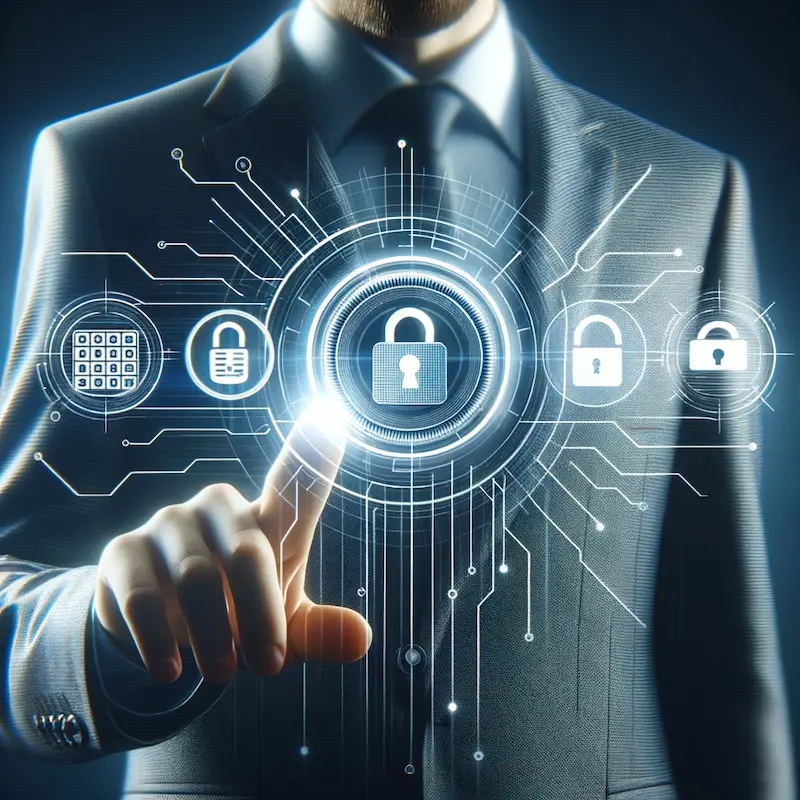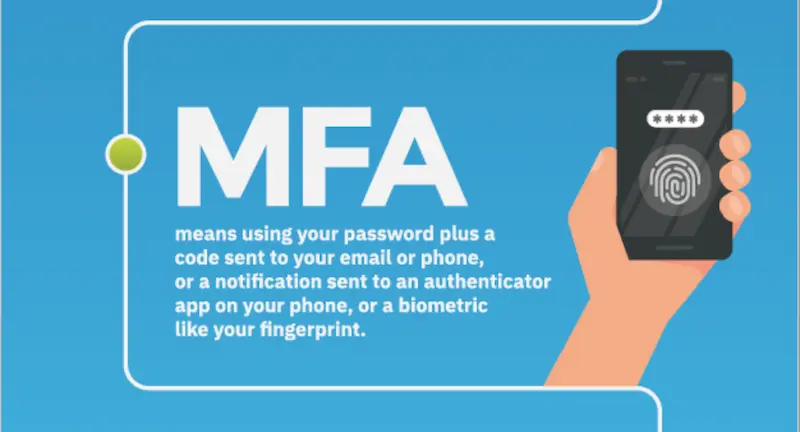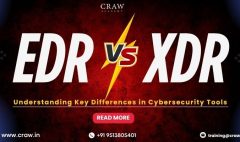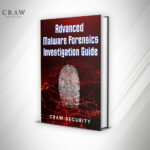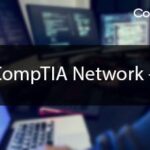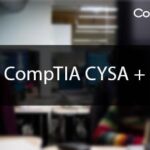Multi-Factor Authentication: Your Shield Against Cybersecurity Threats
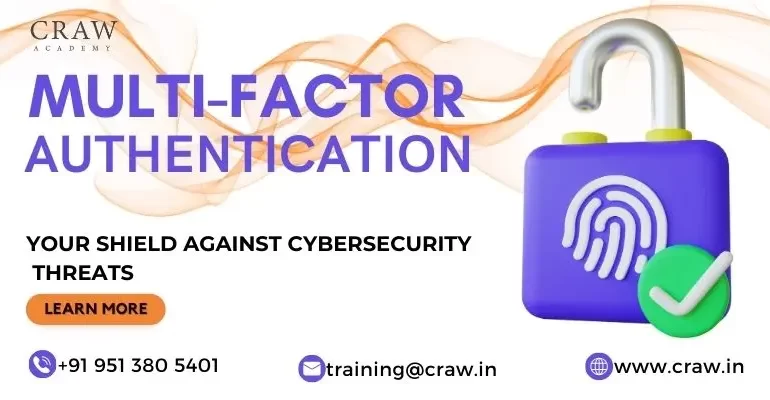
Multi-Factor Authentication: Your Shield Against Cybersecurity Threats
Multi-Factor Authentication
Introduction:
As data breaches and cyberattacks become more prevalent in the digital age, protecting corporate and personal information has never been more vital. Multi-factor authentication (MFA) stands as a highly effective defense mechanism against such threats. The utilization of MFA in conjunction with the conventional username and password framework substantially diminishes the probability of illicit entry.
Understanding Authentication
Multi-factor authentication is a security mechanism that mandates the use of multiple authentication methods from distinct categories of credentials to authenticate the user for login activities or any other transaction. This method incorporates at least two distinct credentials into a single system: one that the user possesses (e.g., a smartphone), one that the user knows (e.g., a password), and one that the user is (e.g., a biometric).
The Need for Multi-Factor Authentication
For comprehensive security measures to be maintained in today’s increasingly digital world, where cybersecurity threats are becoming more frequent and sophisticated, it is of the utmost importance. Multi-factor authentication (MFA) has become an indispensable instrument in the defensive mechanism against such attacks. By surpassing the conventional username and password, it establishes an indispensable safeguard that significantly increases the difficulty for unauthorized individuals to penetrate sensitive information and systems.
Benefits of Multi-Factor Authentication
Here are some key benefits of implementing MFA:
| Enhanced Security | In addition to a username and password, MFA provides an additional layer of security that significantly increases the difficulty for unauthorized users to access accounts, systems, or sensitive data. |
| Reduced Risk of Data Breaches | By implementing MFA, the likelihood of successful data intrusions is substantially reduced. Unauthorized access remains averted notwithstanding the compromise of a password, provided that the supplementary authentication factors remain compromised as well. |
| Protection Against Identity Theft | Master-factor authentication (MFA) enhances the difficulty for adversaries to assume the identity of users by requiring credentials beyond mere passwords. Consequently, this feature mitigates the potential for identity theft. |
| Compliance with Regulatory Standards | A multitude of data protection standards and regulations now mandate or strongly advise the use of MFA. By implementing MFA, organizations can avoid potential fines and legal repercussions by complying with these regulations. |
| Mitigation of Phishing Attacks | Phishing attacks can be effectively defended with MFA. If a user is duped into divulging their password, the supplementary authentication factors serve as an impediment to illicit entry. |
| Building User Trust | Organizations showcase their dedication to security and cultivate confidence among users, consumers, and partners through the implementation of MFA. |
| Flexibility and Customization | MFA provides organizations with a selection of authentication methods (including biometric verification, SMS, and authentication applications) from which to select the one that best meets their requirements. |
| Increased Productivity and Flexibility | Organizations can enhance their confidence in implementing remote or mobile work options with the assistance of MFA, which ensures secure access to resources irrespective of location. |
| Lower IT Security Costs | MFA can reduce the expenses related to cybersecurity incidents, including system downtime, data recovery, and reputation harm, by proactively averting breaches. |
| User Convenience | Modern MFA solutions are frequently speedier and more user-friendly than legacy password-only systems. For instance, biometric authentication may be more expedient than manual password entry. |
| Detailed Audit Trail | MFA systems can generate comprehensive records of authentication attempts, which can be of great value in terms of security monitoring and compliance auditing. |
Single-Factor Authentication
What is single-factor authentication?
Securing access to a system, account, or resource requires the user to provide a single factor, which is commonly a password or passcode. This is referred to as single-factor authentication (SFA). It is the most straightforward method of authentication, as it only requires one layer of security. This element consists of a user-recognized PIN, password, or pattern lock.
Limitations and Risks
| Vulnerability to Theft and Guessing | Passwords, particularly those that are feeble or frequently used, are susceptible to theft, guessing, and cracking via brute force attacks, phishing, and social engineering, among others. |
| Susceptibility to Phishing Scams | Phishing attacks target SFA systems to deceive users into divulging their credentials. |
| Lack of Layered Defense | SFA does not offer security at multiple layers. Without the compromised password, an additional barrier cannot be erected to prevent unauthorized access. |
| Data Breach Risk | User accounts are immediately at risk in the event of a password disclosure, which could result in significant data breaches. |
| Over-reliance on User Responsibility | Single-factor authentication (SFA) assigns complete security responsibility to the user to generate and retain a robust, distinct password. |
Real-World Examples
| Standard Website Login | Users of many websites are still required to input only their username and password to access their accounts via a rudimentary login system. |
| ATM Transactions | For authentication purposes, conventional ATM transactions solely necessitate a PIN, without any supplementary verification. |
| Computer Login | Personal computers and laptops typically require the entry of a single password or PIN to be accessed. |
| Email Access | While many email services initially mandate a password for account access, they frequently provide the choice to enable supplementary security measures. |
| E-Commerce Websites | Certain e-commerce platforms enable users to complete purchases and log in with a password alone. |
Multi-Factor Authentication Explained
Definition and Core Principles
Multi-factor authentication (MFA) is a security mechanism that verifies the identity of the user by requiring multiple methods of authentication from distinct credential categories. By establishing a stratified defense, an unauthorized individual will find it more challenging to gain access to a target, including a physical location, computing device, network, or database. Multiple-factor authentication (MFA) is predicated on the notion that requiring users to provide multiple pieces of identification (factors) enhances security and reduces the likelihood of unauthorized entry.
Types of Factors
MFA is based on three primary types of authentication factors:
| Knowledge Factors | These include the user’s PIN, password, or a series of responses to security queries. It is the most prevalent and fundamental method of authentication. |
| Possession Factors | This variety consists of a user-possessed item. It may take the form of a smart card, key fob, tangible object such as a security token, or a mobile application that produces a time-based one-time password (TOTP). |
| Biometric Factors | These depend on a characteristic of the user and encompass biological attributes. Fingerprint scans, facial recognition, voice recognition, and retinal or iris scans are typical biometric components. |
Factors in Action
| Knowledge Factors in Action | ● The act of inputting a password to get access to a computer system.
● Utilizing a personal identification number (PIN) to access an automated teller machine (ATM) or secure a mobile device. |
| Possession Factors in Action | ● The implementation of a two-factor authentication system involves the transmission of a code through either SMS or email, which is thereafter required to be entered alongside a password.
● The utilization of a hardware token that creates a unique code for the purpose of accessing a system. |
| Biometric Factors in Action | ● The utilization of a fingerprint scanner for the purpose of unlocking a smartphone or for implementing access control measures within highly protected facilities.
● Facial recognition technology is employed for the purpose of identity verification across a range of applications, encompassing cell phones as well as airport security systems. |
The MECE Framework in MFA
Introduction to MECE
The MECE framework, known as “Mutually Exclusive, Collectively Exhaustive,” is a paradigm that finds its primary application in the fields of management consulting and strategic decision-making. The principle stipulates that information has to be arranged in a manner that ensures non-overlapping (mutually exclusive) categories, and when combined, encompasses all conceivable scenarios (collectively exhaustive). This framework possesses significant value in guaranteeing comprehensiveness and lucidity in the processes of analysis and decision-making.
MECE in Multi-Factor Authentication
The MECE framework can be effectively employed to classify and assess the various factors encompassed inside the Multi-Factor Authentication (MFA) system. The primary objective of implementing the Multi-Component Authentication (MFA) system is to ensure that each individual component inside the system fulfills a unique role, devoid of any redundancy or overlap with other factors. Additionally, the MFA system aims to provide full coverage of all conceivable security concerns.
Applying MECE to MFA Factors
- Knowledge Factors
- Possession Factors
- Biometric Factors
Advantages of the MECE Approach
| Enhanced Security | The MECE approach mitigates the potential impact of compromising one factor (such as knowledge) on the other factors (such as possession or biometrics) in MFA by maintaining their mutual exclusivity. |
| Clear Categorization | The categorization of authentication elements offers a systematic and organized approach to facilitate the development and execution of a comprehensive multi-factor authentication (MFA) strategy. |
| Comprehensive Coverage | The comprehensive nature of the mutually exclusive and collectively exhaustive (MECE) principle guarantees that all possible security factors are taken into account, hence eliminating any vulnerabilities in the authentication procedure. |
| Simplified Decision-Making | The implementation of multi-component authentication (MFA) by businesses is facilitated by the MECE framework, which aids in decision-making by providing a clear delineation of the individual roles and contributions of each authentication component. |
| Facilitates Risk Assessment | The act of categorizing factors into distinct types facilitates the evaluation and reduction of risks linked to each respective category, hence enhancing the resilience of the multi-factor authentication (MFA) system. |
Knowledge Factors
- Passwords: A password, which is typically a series of numbers, characters, and symbols, is a confidential credential that only the user knows in order to gain secure access.
- Passphrases: For authentication purposes, a passphrase is a longer, more complex, and frequently easier-to-remember sequence of words or phrases.
- PINs: A Personal Identification Number (PIN) is a numerical code that is typically comprised of four to six digits and is utilized in the authentication procedure.
Possession Factors
- Smart Cards: Smart cards are tangible cards that contain integrated circuits that are employed to authenticate and grant secure access.
- Security Tokens: For user authentication, security tokens are diminutive hardware devices that produce a unique and secure code.
- Mobile Devices: Authentication tools on mobile devices, including smartphones and tablets, frequently consist of applications that generate time-sensitive tokens or deliver push notifications to verify access.
Biometric Factors
- Fingerprint Recognition: Smart cards are tangible cards that contain integrated circuits that are employed to authenticate and grant secure access.
- Facial Recognition: For user authentication, security tokens are diminutive hardware devices that produce a unique and secure code.
- Retina Scanning: Authentication tools on mobile devices, including smartphones and tablets, frequently consist of applications that generate time-sensitive tokens or deliver push notifications to verify access.
Combining Factors
- Two-Factor Authentication: For enhanced security, this requires the use of two distinct forms of authentication methods, such as a password and a mobile device code.
- Three-Factor Authentication: This approach integrates three discrete modalities of authentication, which generally comprise an element of familiarity (e.g., a password), an element of possession (e.g., a credential), and an element of inherent nature (e.g., a fingerprint).
- Biometric Combinations: Biometric combinations entail authenticating the identity of a user using multiple biometric factors, such as fingerprint and facial recognition.
Implementing MFA
Best Practices
| User Education and Training | Users should be informed of the significance of MFA and its appropriate implementation in order to increase compliance and usage. |
| Choose Appropriate Authentication Methods | Achieve a balance between security requirements and user convenience when selecting authentication factors; take into account the context and sensitivity of the data being safeguarded. |
| Regularly Update and Review MFA Settings | Maintain MFA settings in accordance with evolving security requirements and technological developments by auditing and updating them on a regular basis. |
| Implement Adaptive MFA | Adaptive MFA, which modifies authentication requirements in accordance with the user’s location, device, network, and behavior patterns, is a viable option to contemplate. |
| Plan for Backup and Recovery | Implement protocols for account restoration and backups, in the event that users misplace their authentication credentials. |
Setting Up MFA
| Assess Security Needs | Ascertain the requisite level of security for various systems and data, as well as which systems necessitate the use of MFA. |
| Select MFA Solutions | Select an MFA solution that satisfies the requirements of your organization and seamlessly integrates with its current systems. |
| Deploy MFA Tools | Ensuring enterprise-wide implementation of the MFA solution, guaranteeing compatibility with user devices and systems. |
| Configure MFA Policies | Establish MFA policies, including the required timeframe and the factors that will be utilized. |
| Test and Validate | Test the MFA configuration prior to complete deployment to ensure it functions as intended and does not impede user productivity. |
Challenges in Implementation
| User Resistance | The implementation of MFA might encounter resistance from users as a result of perceived inconvenience or complexity. |
| Integration with Existing Systems | It can be difficult to integrate MFA into an existing IT infrastructure, particularly in systems that were not initially intended for it. |
| Cost and Resource Allocation | MFA implementation could necessitate substantial investments in training and technology. |
| Technical Issues and Reliability | It can be difficult to guarantee the dependability of MFA systems, particularly with regard to device compatibility and network connectivity. |
| Balancing Security and Usability | It is essential to strike a balance between user convenience and stringent security measures in order to guarantee both user compliance and effective security. |
Future Trends in MFA

Advancements in Technology
| Biometric Enhancements | It is probable that forthcoming MFA systems will incorporate more sophisticated biometric technologies, including gait recognition or heart rate, to provide more secure and distinctive methods of identification. |
| Integration with IoT Devices | The proliferation of the Internet of Things (IoT) will facilitate the integration of MFA systems with an expanding array of devices, thereby augmenting the variety of available authentication factors. |
| Decentralized Authentication | By implementing blockchain and other decentralized technologies, MFA system security and privacy could be improved. |
Emerging Threats
| Sophisticated Phishing Attacks | Phishing attempts to circumvent or mislead MFA systems may become more sophisticated as the prevalence of MFA increases. |
| AI-Powered Attacks | The implementation of artificial intelligence by malevolent actors in cyberspace may give rise to cyber threats that are more intricate and adaptable, thereby posing a potential challenge to conventional MFA techniques. |
| Exploitation of Biometric Data | As the use of biometrics in MFA becomes more widespread, the hijacking and improper application of biometric information may become a significant risk. |
The Role of AI
| Enhanced Security Protocols | With the assistance of AI, the security of MFA systems can be improved through the utilization of adaptive authentication methods that adapt to perceived risk levels and user behavior and context. |
| Fraud Detection | Algorithms powered by artificial intelligence can identify and notify of anomalous patterns that could indicate a fraudulent authentication attempt. |
| User Experience Optimization | By discerning the user’s present circumstances and employing AI to determine the most suitable authentication factor, it is possible to enhance the user experience. |
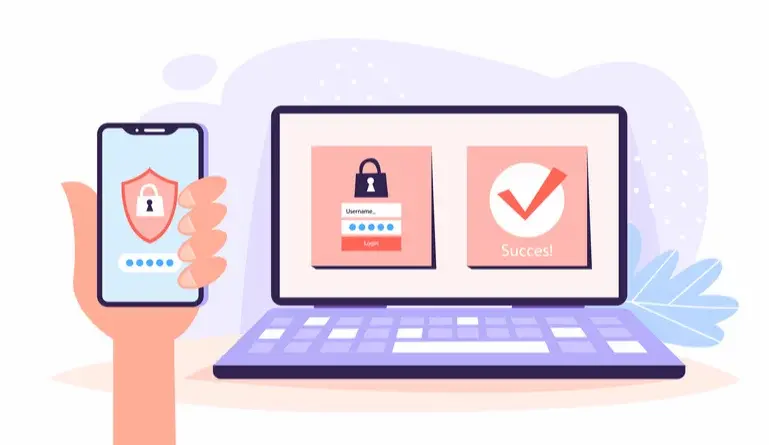
Case Studies
Successful MFA Implementation
- Financial Institutions Embracing MFA: MFA has been effectively implemented by a large number of banks and financial institutions, thereby substantially reducing fraud and unauthorized account access. Through the implementation of biometric authentication, SMS verification, passwords, and SMS verification, these institutions have fortified the security of online transactions.
- Tech Companies Setting Standards: Prominent technology corporations such as Google and Microsoft have not only adopted MFA but have also actively promoted its extensive usage among their users. Their achievement in mitigating account intrusions and takeovers has established an industry standard.
- Healthcare Sector Strengthening Patient Data Protection: Successful MFA implementations have occurred in the healthcare industry to safeguard patient records and sensitive data. By implementing a combination of biometrics and passwords or employee ID cards (possession factor), they have substantially enhanced data security.
MFA Failures and Lessons Learned
- SMS-Based MFA Compromised: The susceptibility to SMS-based MFA compromises through SIM shifting or interception has been underscored by incidents in which text messages were used exclusively as a security measure. As a consequence, there was an increased focus on selecting more secure methods such as biometrics or app-based tokens.
- User Resistance Leading to Low Adoption: Certain organizations encountered difficulties in implementing MFA as a result of user opposition. These instances underscored the necessity for user education and awareness initiatives that instruct users on the significance of MFA in terms of security.
- System Outages and Inconveniences: Instances of user lockouts or system outages were reported as a result of MFA systems failing to adequately implement security measures or lacking fallback authentication alternatives. These occurrences highlighted the significance of a flexible and well-designed MFA system that takes user convenience and dependability into account.
FAQs
About Multi-Factor Authentication
- What is Multi-Factor Authentication?
Multi-factor authentication is a form of electronic authentication whereby authorization to utilize a website or application is contingent upon the user providing and effectively presenting two or more pieces of evidence to an authentication mechanism.
2. How can I implement MFA in my organization?
Here’s a structured approach to guide you through the process:
- Assess Your Security Needs,
- Choose the Right MFA Solution,
- Plan Your Implementation Strategy,
- Educate and Train Users,
- Integrate MFA with Your IT Infrastructure,
- Test the MFA System,
- Roll Out MFA Gradually,
- Provide Support,
- Monitor and Review,
- Prepare for Contingencies,
- Compliance and Regulation Adherence,
- Gather Feedback and Optimize, etc.
3: What are the legal considerations for MFA?
Organizations must be cognizant of several legal considerations while using Multi-Factor Authentication (MFA). These aforementioned concerns serve the purpose of ensuring adherence to legal statutes and regulations, while also safeguarding the rights and privacy of individuals:
- Data Protection and Privacy Laws,
- Consent and Disclosure,
- Accessibility and Non-Discrimination,
- Security of Authentication Data,
- Record Keeping and Audit Trails,
- Breach Notification Laws,
- Employee Privacy and Rights,
- Cross-Border Data Transfers,
- Contractual Obligations,
- Use of Third-Party MFA Solutions, etc.
4: Can MFA be used for personal accounts?
Yes, Multi-Factor Authentication (MFA) can be effectively employed for personal accounts, and its adoption is progressively advocated as a customary security measure. Numerous online businesses and platforms provide Multi-Factor Authentication (MFA) alternatives for individual user accounts, particularly those that entail handling sensitive information or conducting transactions. The application for the Master of Fine Arts (MFA) degree can be extended to personal accounts in the following manner:
- Online Banking and Financial Services,
- Email Accounts,
- Social Media Platforms,
- Cloud Storage Services,
- E-commerce Websites,
- Gaming and Entertainment Services, etc.
5: Is Multi-Factor Authentication necessary for all types of accounts?
The implementation of Multi-Factor Authentication (MFA) has been shown to greatly augment security measures. However, the necessity of employing MFA for various sorts of accounts is contingent upon a multitude of elements, such as the level of sensitivity associated with the stored information, the likelihood of unauthorized access, and the potential ramifications resulting from a breach in security.
However, MFA is necessary for the following types of accounts:
- Financial Accounts,
- Email Accounts,
- Work-Related Accounts,
- Cloud Storage Accounts, etc.
6: Can Multi-Factor Authentication be bypassed or hacked?
Yes, Multi-Factor Authentication (MFA) possesses the potential to be circumvented or compromised, albeit it offers considerably greater security compared to single-factor authentication mechanisms such as passwords alone. Similar to other security systems, multi-factor authentication (MFA) is not completely infallible and can possess vulnerabilities that make it susceptible to specific sorts of attacks or flaws. Here are some potential vulnerabilities that could compromise the security of a Multi-Factor Authentication (MFA) system:
- Phishing Attacks,
- SIM Swapping,
- Man-in-the-Middle Attacks,
- Exploiting Backup or Recovery Methods,
- Malware or Mobile App-Based Attacks,
- Biometric Spoofing,
- Social Engineering,
- Time-Based One-Time Password (TOTP) Exploits, etc.
7: What should I do if I lose my MFA device or forget my authentication credentials?
In the event of losing one’s Multi-Factor Authentication (MFA) device or experiencing a lapse in memory regarding authentication credentials, it is imperative to promptly undertake necessary measures to uphold the security of one’s account and restore access. The following steps should be adhered to:
If You Lose Your MFA Device
- Contact Your Service Provider,
- Use Backup Methods,
- Regain Access, and
- Set Up MFA on a New Device.
If You Forget Your Authentication Credentials
- Password Reset,
- Account Recovery Options,
- Contact Support, and
- Update Security Information.
8: Are there any downsides to Multi-Factor Authentication?
Multi-factor authentication (MFA) is an indispensable mechanism for augmenting security; nonetheless, it does entail several possible drawbacks that necessitate careful consideration by both companies and people:
- User inconvenience,
- Dependency on Devices or Networks,
- Risk of Lost or Stolen Devices,
- Cost and Complexity,
- Technical Issues and Failures,
- Potential for Phishing Attacks,
- Biometric Data Privacy Concerns,
- Risk of Backup Authentication Weakness,
- Accessibility Issues, etc.
9: What are the potential risks of Biometric MFA methods?
Biometric Multi-Factor Authentication (MFA) systems, despite their ability to offer a substantial level of security and convenience, present a range of possible hazards and issues that need to be taken into account:
- Privacy Concerns,
- Risk of Data Breach,
- False Positives and Negatives,
- Spoofing Attacks,
- Technical Failures or Limitations,
- Accessibility and Inclusivity Issues,
- Dependence on Physical Conditions,
- Legal and Ethical Implications,
- Limited Revocation Options, etc.
10: Can Multi-Factor Authentication protect against phishing attacks?
Multi-factor authentication (MFA) has the potential to offer a substantial degree of safeguarding against phishing assaults; nonetheless, it is crucial to acknowledge that it is not an infallible remedy. The manner in which Multi-Factor Authentication (MFA) engages with the potential threats posed by phishing activities can be elucidated as follows:
How does MFA Provide Protection?
- Layered Defense,
- Reduced Effectiveness of Stolen Credentials, etc.
Limitations of MFA Against Phishing
- Sophisticated Phishing Techniques,
- SMS-Based MFA Vulnerabilities,
- User Compliance and Awareness, etc.
Best Practices
- Use Strong MFA Methods,
- Regular User Training,
- Stay Informed About Phishing Trends,
Conclusion
In the bottom line, we would like to say that the increasing complexity and evolution of cyber threats necessitate the implementation of robust security measures, such as Multi-Factor Authentication, to address the growing need for enhanced protection. The Master of Fine Arts (MFA) serves as a crucial safeguard, effectively shielding valuable information and computerized infrastructure from illegal intrusion. The adoption of multi-factor authentication (MFA) can greatly enhance the cybersecurity stance of both individuals and companies, making it an essential instrument in the contemporary digital landscape.
All in all, if you have developed a keen interest in knowing more about Multi-Factor Authentication or other relevant technologies, you can join Craw Security’s world-class batches of 1 Year Diploma in Cyber Security Courses facilitated by highly curated mentors and trainers with several years of quality experience and expertise in their respective fields. To know more about the upcoming batches and other prominent stuff, give us a call at +91-9513805401 — the hotline number running 24X7 for our current and prospective students willing to highlight their careers in cybersecurity.

